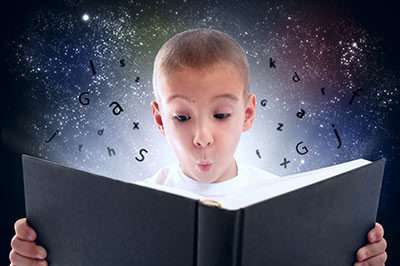
Novels and short stories are filled with emotions. The characters in them experience the ups and downs of the human condition, often in dramatic fashion. And as we read along, we feel things, too—about the characters and ourselves. For these reasons, literature offers a gateway to social-emotional learning (SEL) in your classroom.
Teaching social and emotional skills can improve students’ mental health, reduce anxiety and depression, thwart bullying, and improve academic performance and in-class behavior.
When students analyze the emotions of the characters they are reading about, they not only gain a greater understanding of the text but also a greater understanding of their own feelings.
Asking SEL-based questions at different stages of the reading process can be an effective and time-efficient strategy for building your students' social and emotional intelligence.
The table below compares traditional literature response questions with SEL-based questions for the book Because of Winn-Dixie by Kate DiCamillo.
Traditional Questions |
SEL-Based Questions |
|---|---|
|
Why does Opal name the dog Winn-Dixie? |
How does Opal’s posture and voice change when she is talking to Winn-Dixie? |
|
How old was Opal when her mother left? |
How does Opal feel about her mother leaving? How does she show her emotions about this? |
|
How does Opal realize Winn-Dixie is missing? |
In what ways does Opal control her impulses? |
|
Why is Otis put in jail? |
When Opal faces a stressful situation, how does she deal with it? |
Asking SEL Questions
Here’s a process you can follow to integrate SEL questions into your literature units:
Before Reading
After students have selected a story or novel, have them preview the text by skimming the first few pages. Focus one or more of your prereading questions on emotions, and encourage students to cite evidence for each of their answers. Here are some examples:
- Based on the cover, what emotion do you think the characters will feel most strongly during the story? Happiness? Sadness? Fear? Hurt? Love? Anger?
- What did you learn about the emotional state of the characters by skimming the first few pages?
During Reading
Periodically, have students pause their reading and reflect out loud or in writing about the emotions of the characters.
- Can you identify the emotion(s) that the main character is feeling?
- What event or events led him or her to feel this way?
- How is the emotion similar to or different from what the character was feeling earlier in the story?
- How does the main character express emotions? Are the emotions expressed in a healthy and productive way?
After a few reflection sessions focused on how the characters are feeling, ask students to reflect on their own emotions.
Pause your students’ reading and ask:
- How are you feeling about what is happening in the story? Why do you think that you are feeling that emotion?
- How would you feel if you were in the same situation as the main character? Why?
- How have your emotions changed during the course of the story?
If you are reading out loud, you could also present quick directives about the six primary emotions: Raise your hand if you are feeling happy right now. Now raise your hand if you are feeling sad. Continue the activity with the remaining emotions: fear, anger, hurt, and love. Afterward, provide students time to elaborate on the emotions they feel.
After Reading
When your students finish the story, present writing prompts that encourage them to reflect on the characters’ emotional development as well as their own. Here are some possible prompts:
- How did the main character’s emotion change throughout the story? Cite evidence to track the development.
- What emotions did you feel upon completion of the story? Why do you feel this way?
- Do you think other readers feel different emotions about the conclusion of the story? How so?
Asking SEL questions throughout the reading process should illuminate the connection between actions and emotions—in both real life and in fiction. It is our hope that literature pushes the gate open for deeper social-emotional learning in your classroom.
By Tom McSheehy, MSW, LSW, author of the In Focus series